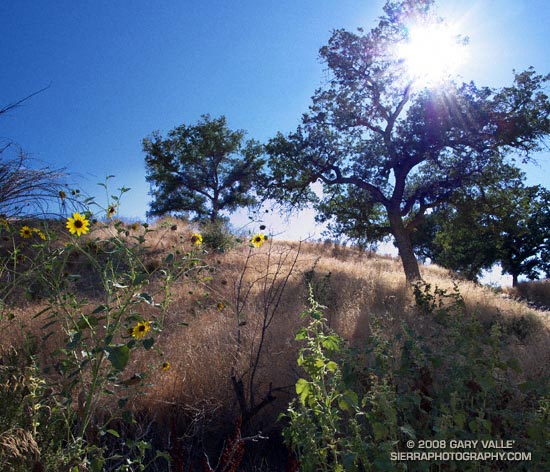
From a run at Ahmanson Ranch (now Upper Las Virgenes Canyon Open Space Preserve).

From a run at Ahmanson Ranch (now Upper Las Virgenes Canyon Open Space Preserve).
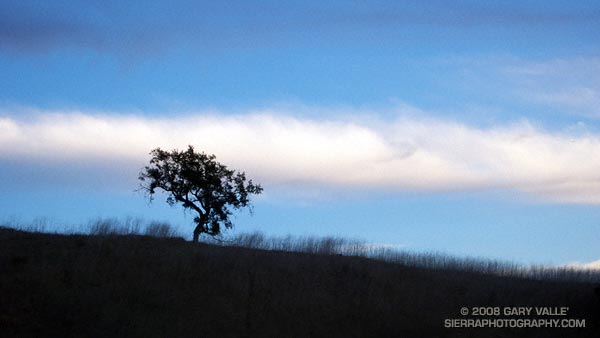
From a run in Upper Las Virgenes Canyon Open Space Preserve (formerly Ahmanson Ranch).
Google search: $g(landscape photography)
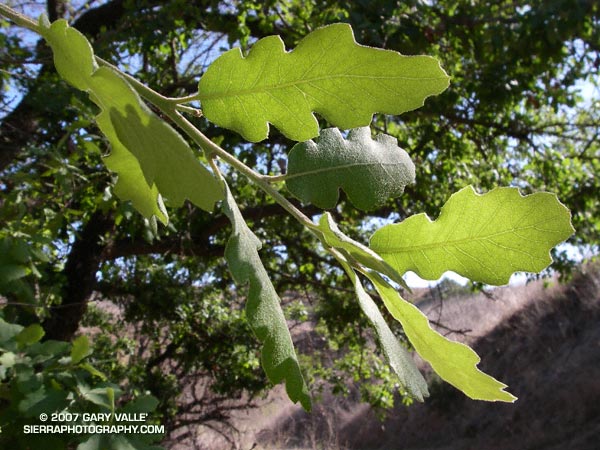
Update April 14, 2023. The Ahmanson Blue Oak has died. Please see the post Ahmanson Blue Oak Succumbs to Climate Change.
Blue oak (Quercus douglasii) is a characteristic oak of the lower elevations of the Sierra foothills and coastal mountains, its range essentially encircling California’s Central Valley.
Based on its reported range, Upper Las Virgenes Canyon Open Space Preserve (formerly Ahmanson Ranch) contains one of the southernmost populations of blue oak within its range. However, the predominate deciduous oak in the area is valley oak (Quercus lobata), and occurrences of blue oak appear to be rare. Regional climate modeling suggests that over the next century the range of blue oak could shift northward and diminish to nearly 60% of its current range.
Blue oak is reported to hybridize with valley oak, however a 2005 study suggests hybrids of these species may be more rare than generally accepted.
The photograph of the leaves of a blue oak was taken on a run along East Las Virgenes Canyon to Lasky Mesa on April 24, 2007. A valley oak immediately adjacent to this blue oak was killed in the 2005 Topanga Fire.
Related posts: Ahmanson Blue Oak Succumbs to Climate Change, Valley Oak Savanna, Laskey Mesa Oak
Technical papers:
Modeled regional climate change and California endemic oak ranges.
Kueppers, L.M., M.A. Snyder, L.C. Sloan, E.S. Zavaleta, and Brian Fulfrost. 2005.
Proceedings of the National Academy of Sciences of the United States of America, 102(45): 16281 – 16286.
Limited hybridization between Quercus lobata and Quercus douglasii (Fagaceae) in a mixed stand in central coastal California.
Kathleen J. Craft, Mary V. Ashley and Walter D. Koenig.
American Journal of Botany. 2002;89:1792-1798.
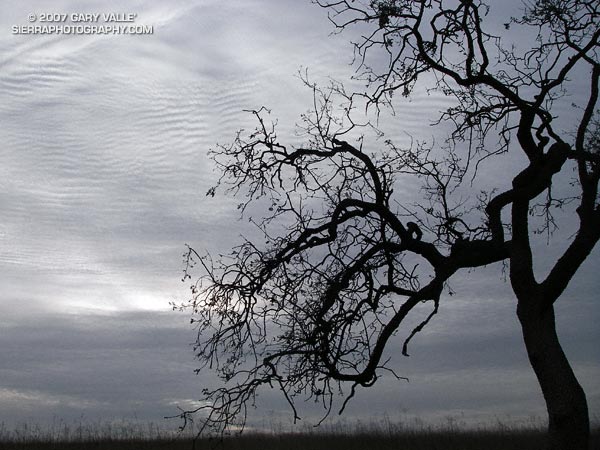
From a run in Upper Las Virgenes Canyon Open Space Preserve (formerly Ahmanson Ranch).
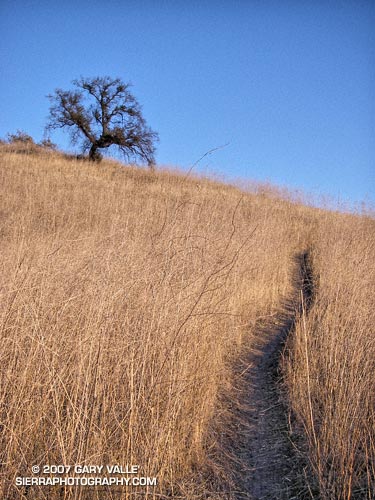
Hillside oak and trail near Laskey Mesa. From a run in Upper Las Virgenes Canyon Open Space Preserve (formerly Ahmanson Ranch).
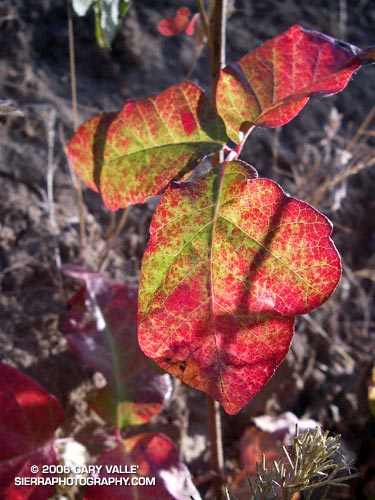
Vibrant green with lustrous leaves in the Spring, Poison Oak (Toxicodendron diversilobum) generally becomes less vivid with age, eventually turning red in the late Summer and Fall. The red color is due to anthocyanin pigments in the plant’s sap that become unmasked as the leaf loses chlorophyll.
Anthocyanin pigments are responsible for the reds and purples in Autumn leaves, and in common fruits and vegetables such as apples, plums, cranberries, grapes, tomatoes and strawberries. Some studies suggest anthocyanin pigments may contribute to the health benefits of these foods.
While the chemistry of Fall colors is fairly well understood, the role the yellow and red pigments play in the physiology of plants is not as clear. In The Warm Hues of Fall Foliage (2002), Geoff Brumfiel summarizes competing theories, ranging from sun and frost protection to acting as a bug repellent — or attractant.
As a starting point for more information regarding poison oak and it’s allergen urushiol, see Poison Oak: More Than Just Scratching The Surface (Wayne’s Word) and Allergies: Poison Plant Allergies: Poison Ivy, Oak, and Sumac (WebMD).
The photograph of poison oak is from a run in Dayton Canyon in the Simi Hills northwest of Los Angeles.
Related post: Poison Oak Along the Garapito Trail